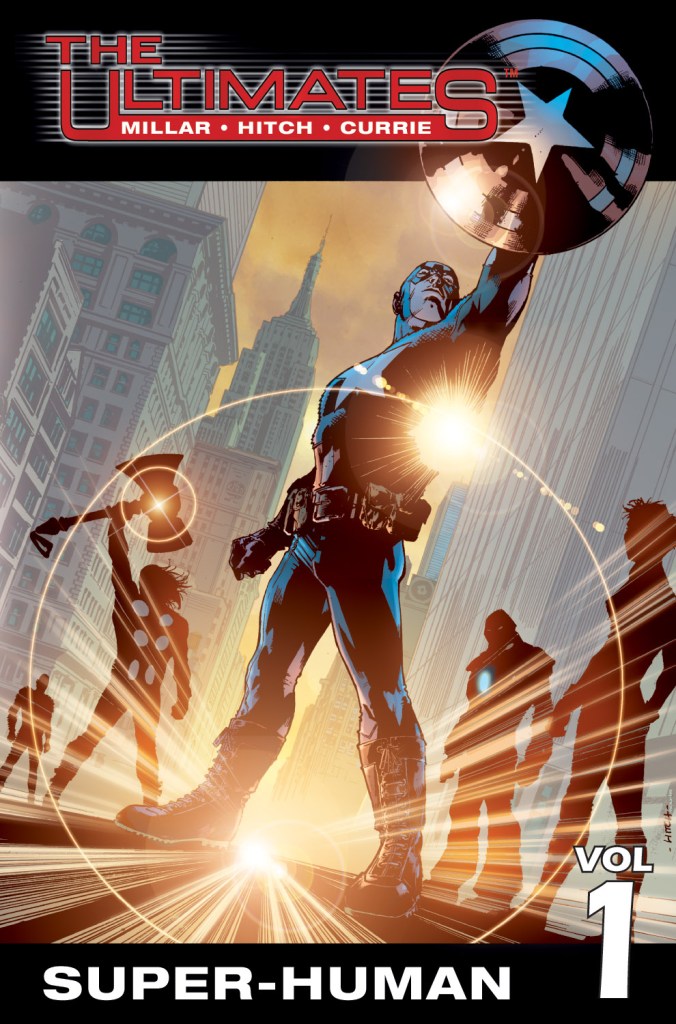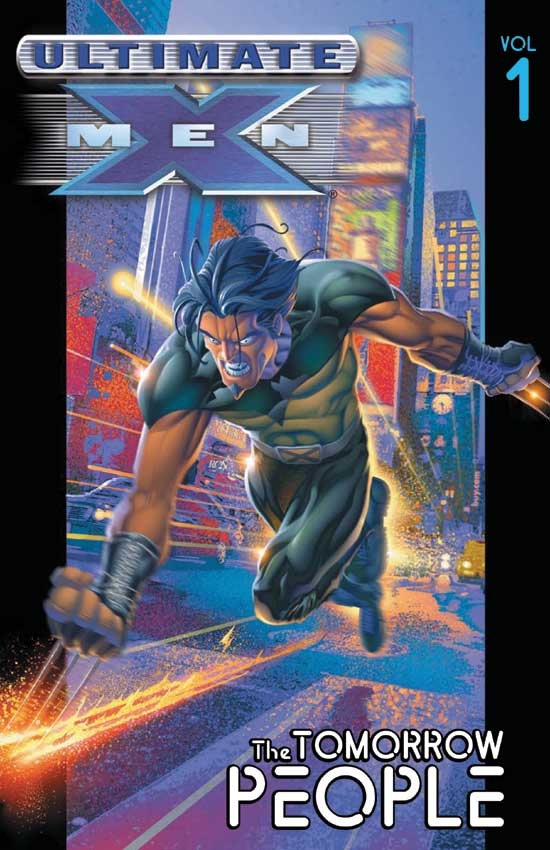And now it’s back, resurrected by its destroyer, Jonathan Hickman, and pumping out blazingly hot collectors’ items that are also fascinating updates on classic themes. Is it worth jumping into these books now, as a collector or as a reader? What’s hot from what came before? Is it worth grabbing any of these old books?
THE ORIGINAL ULTIMATE UNIVERSE
The Ultimate Universe launched lean, but they went big. Ultimate Spider-Man took what Stan Lee and Steve Ditko did in a half an issue and stretched it out over an entire arc, waiting almost 5 issues to get Peter into the costume. It wasn’t until the following year that the next book in the line hit – Ultimate X-Men from Mark Millar and Adam Kubert, based heavily on the Fox movie that had just released in theaters. And then in 2002, Ultimates #1 dropped, from Millar and artist Bryan Hitch, ushering in what some argue is the Widescreen Age of comics.
There were three main innovations here that led to the commercial success of the Ultimate Line. The books were all to varying degrees cinematic: Ultimate Spider-Man was talky, like if Glengarry Glen Ross was populated by teenagers, with a distinct movie-like patter, while Ultimate X-Men and Ultimates were built around big splash pages, huge fights, and “realistic” costuming updated for a post-9/11 universe.

They were also printed into oblivion. Variant covers were a marketing gimmick many argued bore some responsibility for the comic market crash of the ‘90s, so they were used very sparingly at the dawn of this era, but these books saw very high print runs and were often sold in non-traditional settings, like big box stores or even (weirdly enough) Payless Shoes, a budget national shoe chain.

And finally they were crafted with the book market in mind. Collected editions of comics from the ‘80s and ‘90s used to be an extreme rarity, reserved for only groundbreaking works like Watchmen or massively popular stories like the Dark Phoenix Saga. Here, the books were specifically written with future collected editions in mind – Ultimate Spider-Man’s slow burn origin might have crawled as a monthly comic, but as a 120 page collected edition sold after the sixth issue released, it really zipped along.
The latter two factors play a huge role in pricing of back issues today. Early issues of Ultimate Spider-Man have hung onto a lot of their value because of the craft involved, and because of their importance in the broader Marvel multiverse, but Ultimates and Ultimate X-Men are for the most part available for at or near their 2001 cover prices on the secondary market. There are just too many copies available out there right now for them to rise precipitously. And as we’ll see, the story for the X-Men in particular diverges so much from the traditional X-story that it’s extremely unlikely we’ll see any bump from the new generation.
